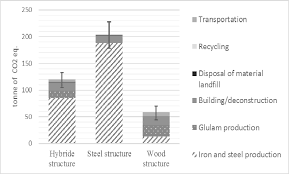Climate Friendly Construction Choices.
As the construction industry grapples with the challenges of climate change, the choice of building materials becomes a crucial consideration. This article explores the environmental benefits of choosing wood over traditional construction materials like concrete, emphasizing wood’s role in reducing the carbon footprint of building projects.
Introduction:
In a world where the impact of construction on the environment is under scrutiny, architects, builders, and developers are seeking sustainable alternatives. Wood, often overshadowed by concrete and steel, emerges as a climate-friendly choice, offering both structural integrity and environmental benefits.
Wood’s Low Carbon Footprint:
One of the primary advantages of wood is its low carbon footprint. Unlike materials such as steel, aluminum, and concrete, which require significant energy for production, wood sequesters carbon during its growth and retains it throughout its life cycle. Choosing wood for construction projects becomes a proactive step in mitigating the environmental impact of the built environment.

Structural Advantages of Wood:
Beyond its environmental benefits, wood possesses structural advantages that make it a viable choice for construction. Wood-based structures are known for their strength, durability, and versatility, offering a sustainable and reliable alternative to traditional construction materials

Reducing the Carbon Footprint of Building Projects:
The carbon footprint of building projects is a significant concern in the construction industry. By choosing wood, developers and builders can actively contribute to reducing this footprint. Wood-based structures not only sequester carbon but also require less energy to produce, making them an environmentally responsible choice for a variety of construction applications.

Wood as an Alternative to Conventional Materials:
Wood is not just an environmentally friendly option; it is also a versatile alternative to conventional materials. Whether used in residential construction or commercial projects, wood provides a sustainable solution that aligns with the growing demand for eco-friendly building practices.
Conclusion:
In conclusion, the choice between wood and concrete in construction goes beyond structural considerations—it is a decision that impacts the environment. By opting for wood, the construction industry can actively contribute to the reduction of carbon footprints associated with building projects, fostering a more sustainable and eco-friendly future.
Backlink: Explore more about the environmental benefits of choosing wood in construction here.
This blog post is part of our ongoing series on “Sustainable Forestry in the Face of Climate Change.” Stay tuned for more articles addressing the intersection of forestry, construction, and environmental sustainability.